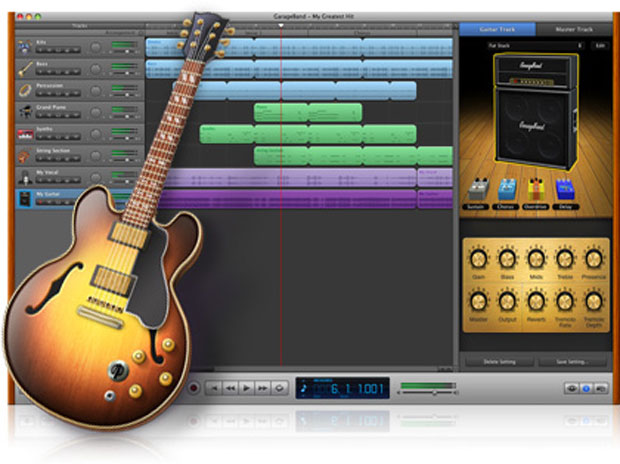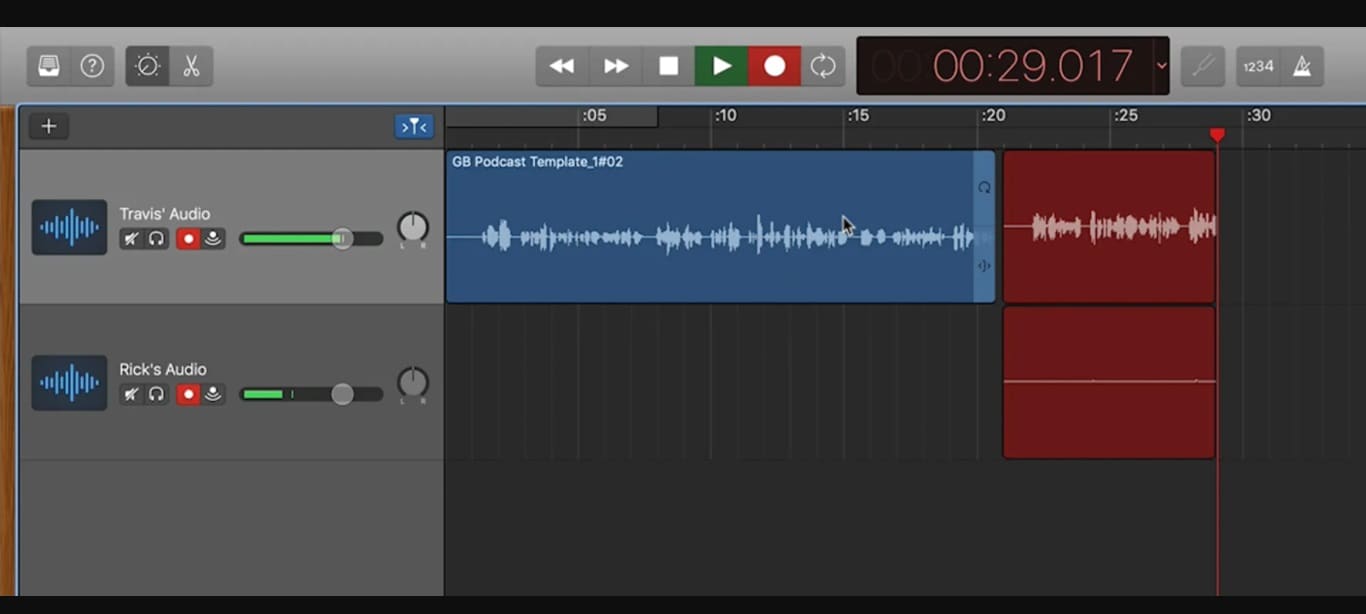

GarageBand is not only a full featured recording studio, a highly capable MIDI synth station, an electronica musician’s dream, or a place to record full songs without a day of music lessons. Your mileage may vary, but give it a shot, and share links to your music with us below, if you can. If nothing else, I find this sort of creative activity calming, soothing, and a great way to make a couple of hours disappear. That helps get into the groove of your masterpiece.

You can also set the Cycle/Loop button so GarageBand only plays the section you’re working on, over and over. If you want to hear the whole thing put together, click the Play triangle at the bottom. I was able to create the six track loop-based snippet in the screenshot above in about 5 minutes. Once you find a synth track you like, filter to Bass loops, and bring a nice grooving bassline over. It will make things easier to edit later.

Mix and match as you will, but create a new track for each new sound. Click on Synths, and repeat the above process. Now, in the Filter list, click on Beats to reset the buttons. Click and drag the corner, and GarageBand will extend out the Loop, with visual cues as to the beginning and end of each loop section. Hover the mouse over the upper right corner of the resulting green rectangle and you’ll see the extend cursor it looks like a round arrow. Drag your beat loop over to the far left, to start on the first measure.
GARAGEBAND RECORDING RED BAR PLUS
A new track will appear, and a big green Plus button will show up. Once you find one you like, click and drag the Beat’s name over to the Tracks window. If you see the Column browser, or the Jingles, Stingers, or Sound Effects browser, click on the little musical notation item in the tab buttons in the upper left of the Loops pane.Ĭlick on Beats in the second column, and click on any of the beats to listen to them. For our example here, click on Electronic in the filter list. The next two columns to the right are filters for tone and mood, filtering for loops Apple has categorized as Relaxed, Grooving, Melodic, Dissonant, etc.Ĭlick the buttons to filter the list of available GarageBand Loops. Click on a musical style, like Rock/Blues, Urban, or World from the left column of filters, or click on the type of instrumentation in the column just to the right, filtering the list to only show Loops containing specific instruments, like Guitars, Piano, Synths, Bass, etc. Note the different filter buttons at the top of this browser pane. This time, however, the Loop browser will show up in the right hand pane. The familiar GarageBand window will open. Name your file something you’ll remember, and file it somewhere where you can find it again. Click on Loops, and then on the Choose button in the lower right. If you’re already in GarageBand with another project open, select New Project from the File menu to get this window. Start GarageBand and select New Project in the start window. The first step is to bring up the GarageBand Loops browser.


 0 kommentar(er)
0 kommentar(er)
